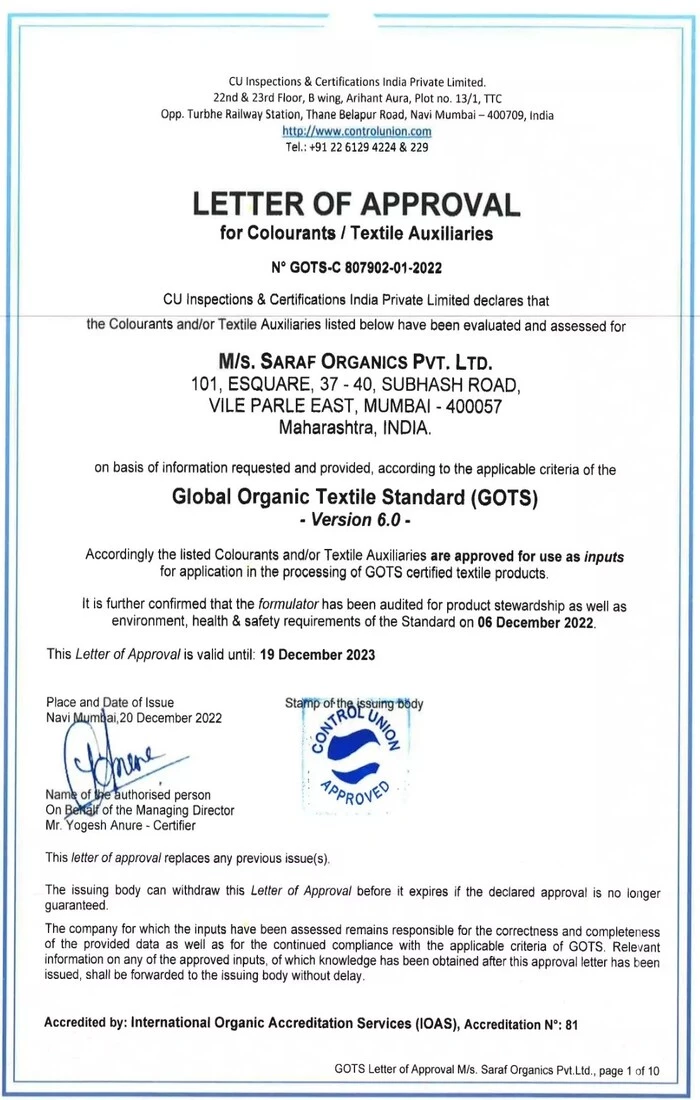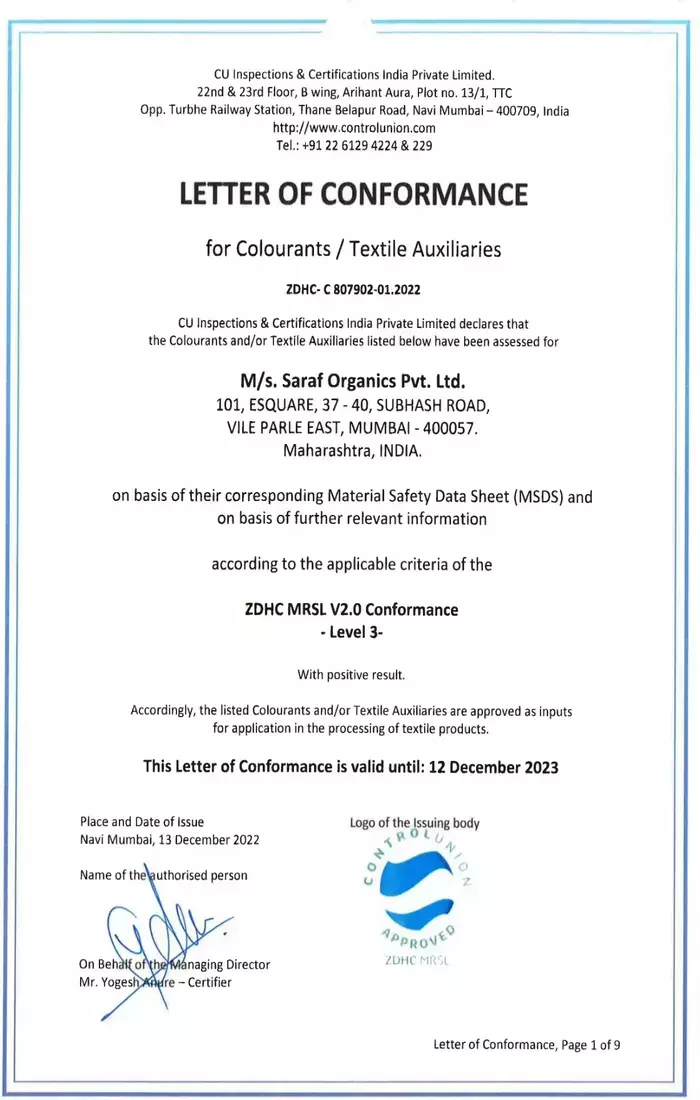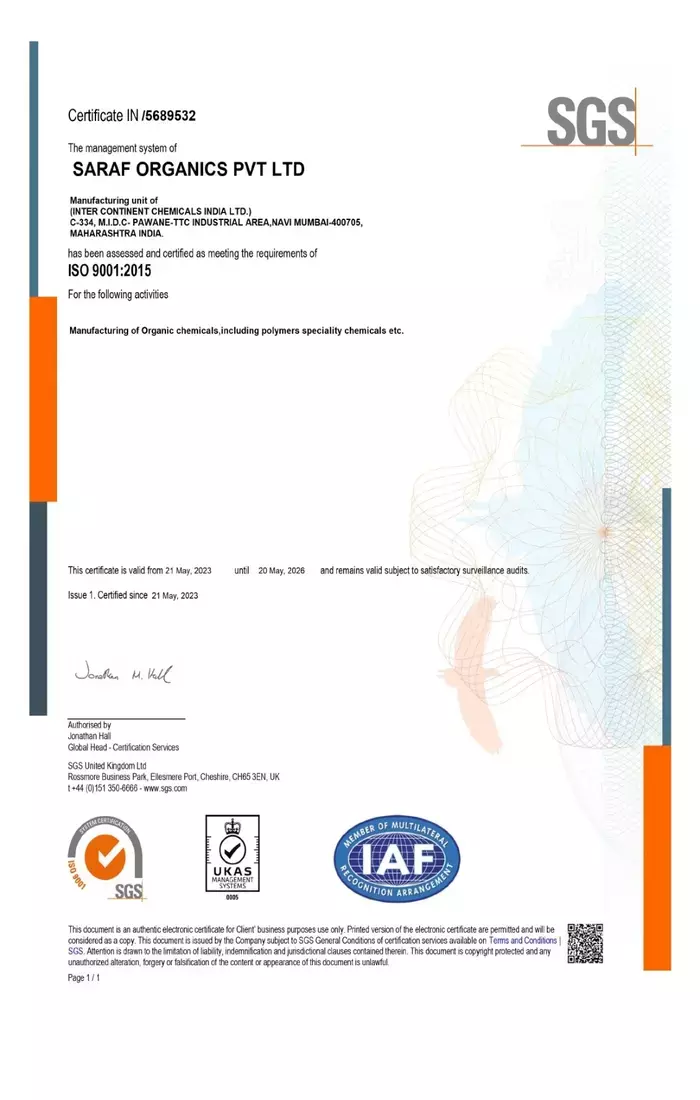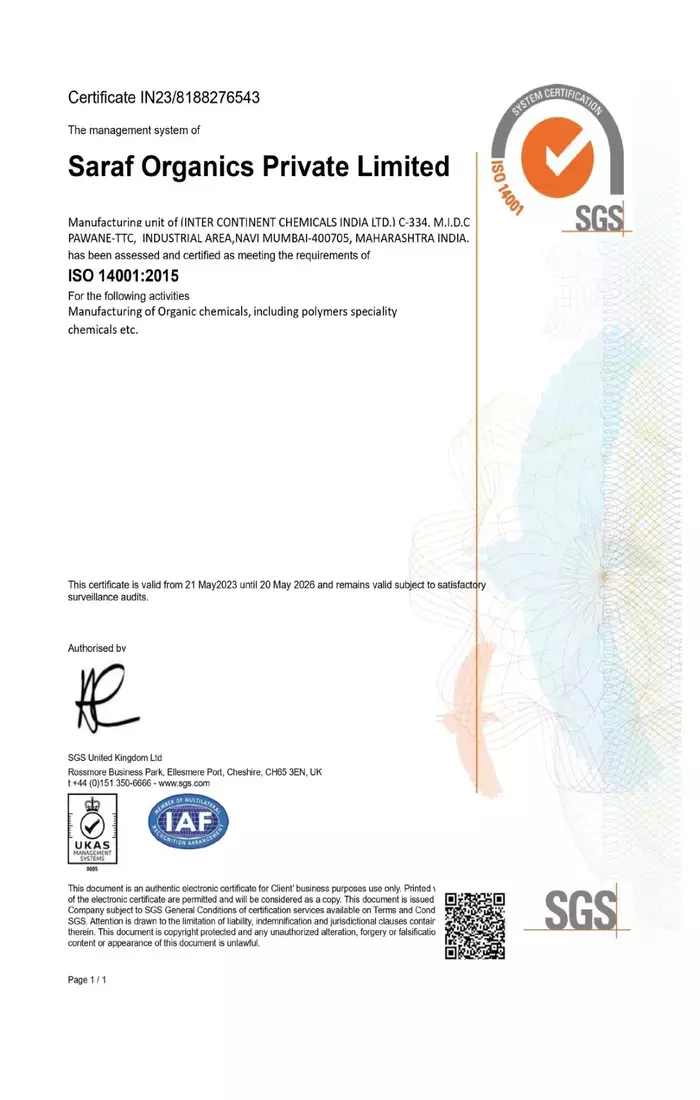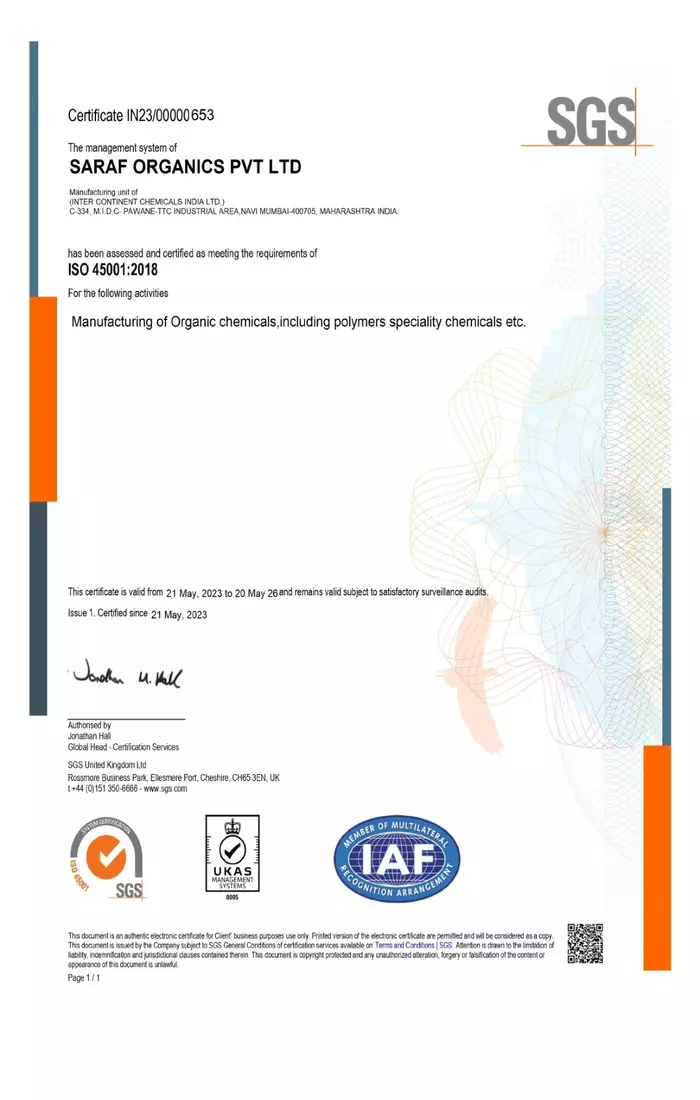
Finishing Agents
Function:
Softeners are used to impart a soft and smooth feel to fabrics, making them more comfortable to wear.
Examples:
Silicone softeners, cationic softeners, and fatty acid-based softeners.
Function:
Antistatic agents reduce or eliminate static electricity on the fabric surface, preventing issues like clinging and discomfort.
Examples:
Quaternary ammonium compounds, non-ionic antistatic agents.
Function:
Flame retardant finishes are applied to textiles to reduce flammability, providing increased safety in certain applications.
Examples:
Phosphorus-based flame retardants, halogen-based flame retardants.
Function:
Water repellent finishes create a barrier on the fabric surface, preventing water absorption and enhancing resistance to wetting.
Examples:
Fluorocarbon-based water repellents, silicone-based water repellents.
Function:
Stain repellents help to resist the penetration of liquids and stains, making it easier to clean the fabric.
Examples:
Fluorocarbon-based stain repellents.
Function:
Wrinkle resistance finishes reduce the tendency of fabrics to wrinkle, making them easier to care for and maintain.
Examples:
Crosslinking agents, resin finishes.
Function:
UV absorbers are used to protect textiles from the harmful effects of ultraviolet (UV) radiation, preventing color fading and degradation.
Examples:
Benzotriazole derivatives, hindered amine light stabilizers (HALS).
Function:
Moisture management finishes regulate the absorption and release of moisture in fabrics, improving comfort.
Examples:
Hydrophilic finishes, phase-change materials.
Function:
Crease resistance finishes help maintain the shape and appearance of textiles, reducing the formation of creases and wrinkles.
Examples:
Crosslinking agents, resin finishes.
Function:
Biocidal finishes are applied to textiles to inhibit the growth of bacteria, fungi, and other microorganisms.
Examples:
Antimicrobial agents, silver-based finishes.
Function:
Aesthetic finishes are applied for decorative purposes, creating special effects on the fabric surface.
Examples:
Luster finishes, embossing, foiling.


